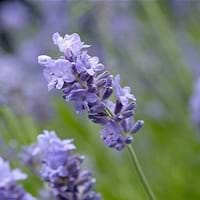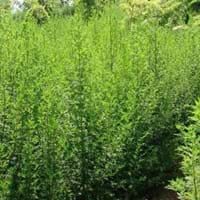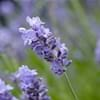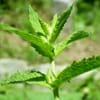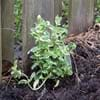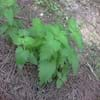Life Span
Perennial
Annual
Origin
Western Europe, Mediterranean
Hybrid origin
Types
Lodden Blue, Royal Velvet,Sachet,Sharon Roberts,Mitchem Gray
Not available
Number of Varieties
Not Available
Habitat
Rocky Mountains, Well Drained
Subtropical forests, Tropical Forests
USDA Hardiness Zone
5-8
Not Available
Sunset Zone
2a, 2b, 3a, 3b, 4, 5, 6, 7, 8, 9, 10, 11, 12, 13, 14, 15, 16, 17, 18, 19, 20, 21, 22, 23, 24
Not Available
Habit
Clump-Forming
Upright/Erect
Flower Color
Purple, Lavender
Not Available
Flower Color Modifier
Bicolor
Not Available
Fruit Color
Sandy Brown
Not Available
Leaf Color in Spring
Light Green, Gray Green
Not Available
Leaf Color in Summer
Light Green, Gray Green
Not Available
Leaf Color in Fall
Light Green, Gray Green
Not Available
Leaf Color in Winter
Light Green
Not Available
Leaf Shape
Pinnate
bipinnate
Plant Season
Spring, Summer, Fall, Winter
Spring, Summer, Fall
Sunlight
Full Sun
Full Sun, Partial Sun
Type of Soil
Loam, Sand
Loam, Sand
The pH of Soil
Neutral, Alkaline
Acidic, Neutral
Soil Drainage
Well drained
Well drained
Bloom Time
Early Summer, Summer
Not Available
Tolerances
Drought
Drought, Salt
Where to Plant?
Ground, Pot
Ground, Pot
How to Plant?
Cuttings, Divison, Layering, Seedlings
Seedlings
Plant Maintenance
Medium
Medium
Watering Requirements
Keep the Soil well drained, Needs less watering
Average Water Needs
In Summer
Lots of watering
Lots of watering
In Spring
Moderate
Moderate
In Winter
Average Water
Average Water
Soil pH
Neutral, Alkaline
Acidic, Neutral
Soil Type
Loam, Sand
Loam, Sand
Soil Drainage Capacity
Well drained
Well drained
Sun Exposure
Full Sun
Full Sun, Partial Sun
Pruning
Remove damaged leaves, Remove dead branches, Remove dead leaves
Remove damaged leaves, Remove dead branches, Remove dead leaves
Fertilizers
All-Purpose Liquid Fertilizer
All-Purpose Liquid Fertilizer, Apply N-P-K
Pests and Diseases
cuckoo spot, Gray mold, Red blotch
Aphids, Gray leaf blight, Root rot
Plant Tolerance
Drought
Drought, Salt
Flowers
Showy
Insignificant
Flower Petal Number
Single
Not Available
Fragrant Bark/Stem
Yes
Yes
Foliage Texture
Fine
Not Available
Foliage Sheen
Matte
Not Available
Attracts
Birds, Butterflies, Flying insects, pollinators
Insects, Not Available
Allergy
Skin irritation, Vomiting
Pollen
Aesthetic Uses
Beautification, Formal Garden, Hanging Basket, Landscape Designing, Showy Purposes, Used for decorating walls, fences, gates, hedges, etc.
Not Used For Aesthetic Purpose
Beauty Benefits
Beautiful Skin, Good Cleanser, Improve skin tone, Moisturizing, Perfumes
Skin inflammation
Environmental Uses
Air purification, Deer resistant, Food for birds
Air purification
Medicinal Uses
Antiseptic, Appetizer, Cholagogue, Diuretic, Sedative, Stomachic, Tonic
Antioxidants, Fever, Inflammation, Malaria
Part of Plant Used
Flowers
Leaves
Other Uses
Air freshner, Beneficial species for attracting pollinators, For making oil for cosmetics, Oil is used in perfume, soaps, creams, etc., Tea-like beverage can be brewed, Used as a condiment, Used as a flavouring in food
Medicinal oil, Oil is used for aromatherapy
Used As Indoor Plant
Sometimes
No
Used As Outdoor Plant
Yes
Yes
Garden Design
Dried Flower / Everlasting, Container, Cutflower, Edging, Herb / Vegetable, Mixed Border, Rock Garden / Wall
Foundation, Mixed Border, Rock Garden, Wall
Botanical Name
LAVANDULA angustifolia 'Munstead'
Artemisia annua
Common Name
English Lavender, Munstead Lavender
sweet wormwood, sweet annie, sweet sagewort, annual mugwort
In Hindi
Lavandula angustifolia
Artemisia
In German
Echter Lavendel
Artemisia
In French
Lavandula angustifolia
Artemisia
In Spanish
Lavandula angustifolia
Artemisia
In Greek
Lavandula angustifolia
Αρτεμίσια
In Portuguese
Lavandula angustifolia
Artemisia
In Polish
Lawenda wąskolistna
Artemisia
In Latin
Lavandyla angystifolia
Artemisia
Phylum
Tracheophyta
Magnoliophyta
Class
Magnoliopsida
Magnoliopsida
Family
Lamiaceae
Asteraceae
Genus
Lavandula
Artemisia
Clade
Angiosperms, Asterids, Eudicots
Angiosperms, Asterids, Eudicots
Tribe
Lavanduleae
Anthemideae
Subfamily
Nepetoideae, Not Available
Asteroideae
Importance of Munstead Lavender and Artemisia
Want to have the most appropriate plant for your garden? You might want to know the importance of Munstead Lavender and Artemisia. Basically, these two plants vary in many aspects. Compare Munstead Lavender and Artemisia as they differ in many characteristics such as their life, care, benefits, facts, etc. Every gardener must at least have the slightest clue about the plants he wants to plant in his garden. Compare their benefits, which differ in many ways like facts and uses. The medicinal use of Munstead Lavender is Antiseptic, Appetizer, Cholagogue, Diuretic, Sedative, Stomachic and Tonic whereas of Artemisia is Antioxidants, Fever, Inflammation and Malaria. Munstead Lavender has beauty benefits as follows: Beautiful Skin, Good Cleanser, Improve skin tone, Moisturizing and Perfumes while Artemisia has beauty benefits as follows: Beautiful Skin, Good Cleanser, Improve skin tone, Moisturizing and Perfumes.
Compare Facts of Munstead Lavender vs Artemisia
How to choose the best garden plant for your garden depending upon its facts? Here garden plant comparison will help you to solve this query. Compare the facts of Munstead Lavender vs Artemisia and know which one to choose. As garden plants have benefits and other uses, allergy is also a major drawback of plants for some people. Allergic reactions of Munstead Lavender are Skin irritation and Vomiting whereas of Artemisia have Pollen respectively. Having a fruit bearing plant in your garden can be a plus point of your garden. Munstead Lavender has no showy fruits and Artemisia has no showy fruits. Also Munstead Lavender is not flowering and Artemisia is not flowering . You can compare Munstead Lavender and Artemisia facts and facts of other plants too.
